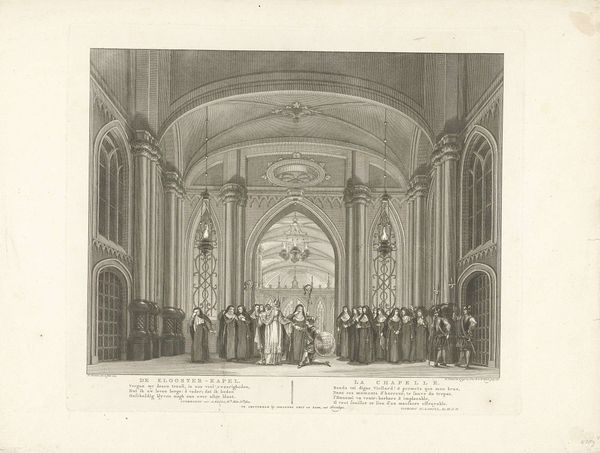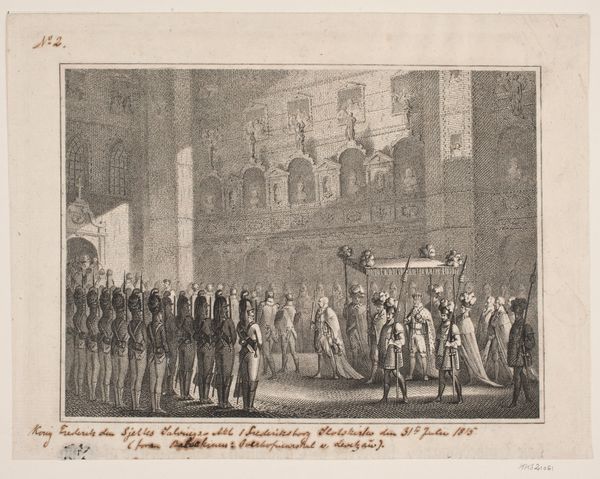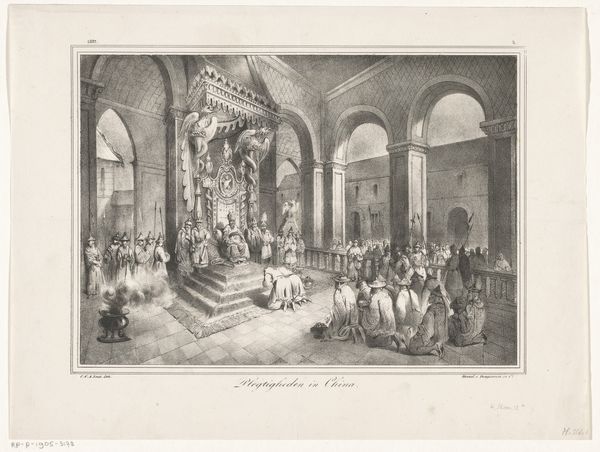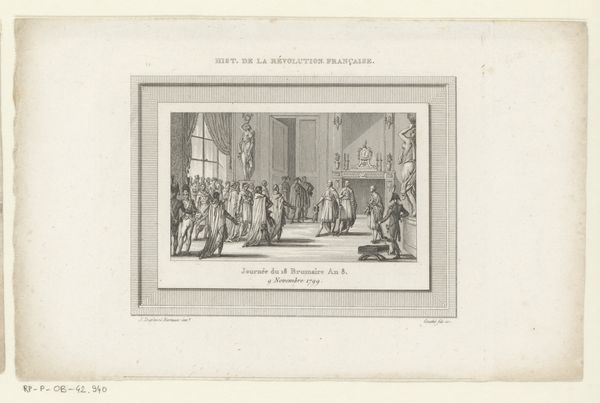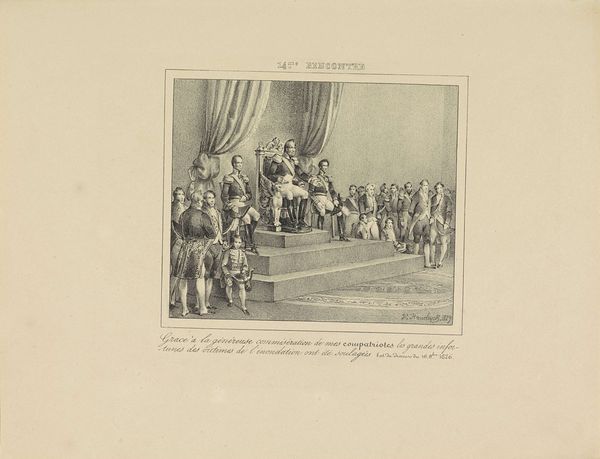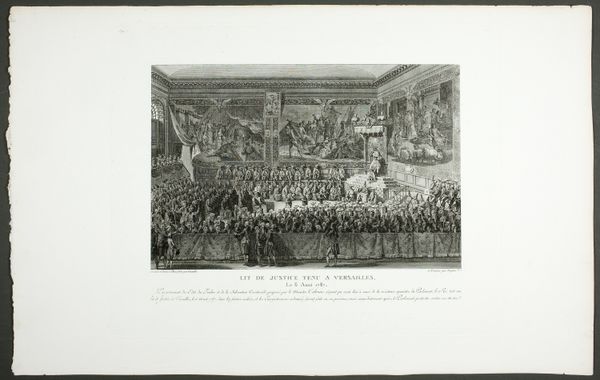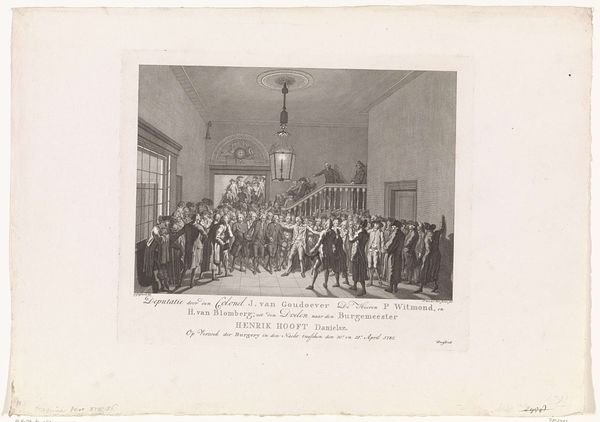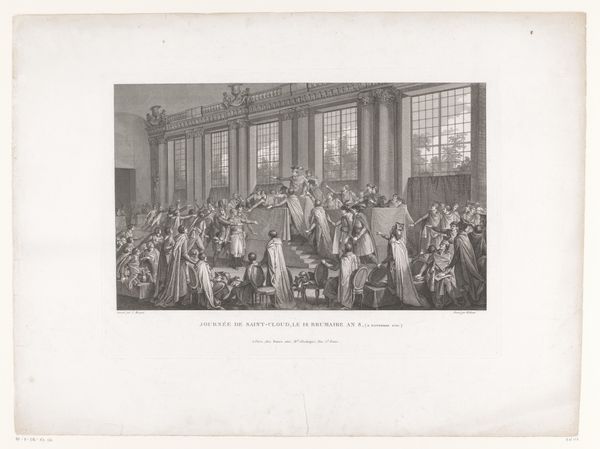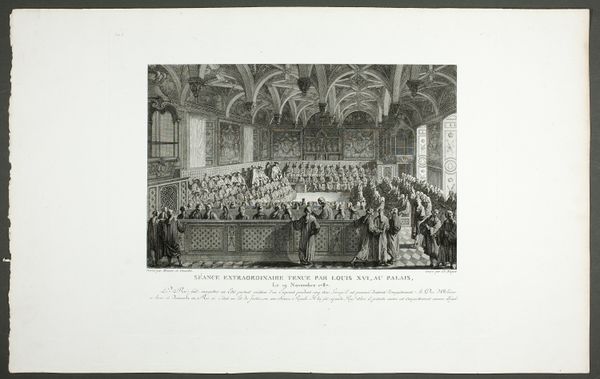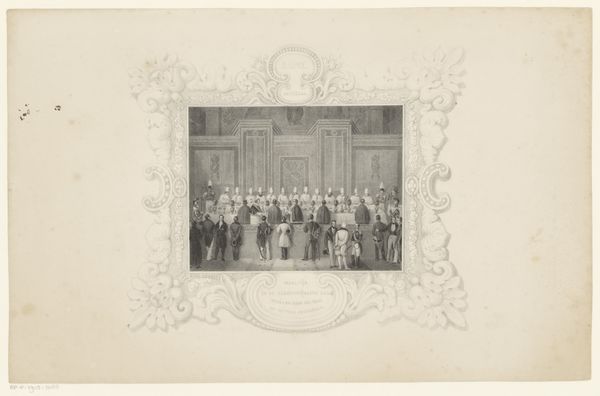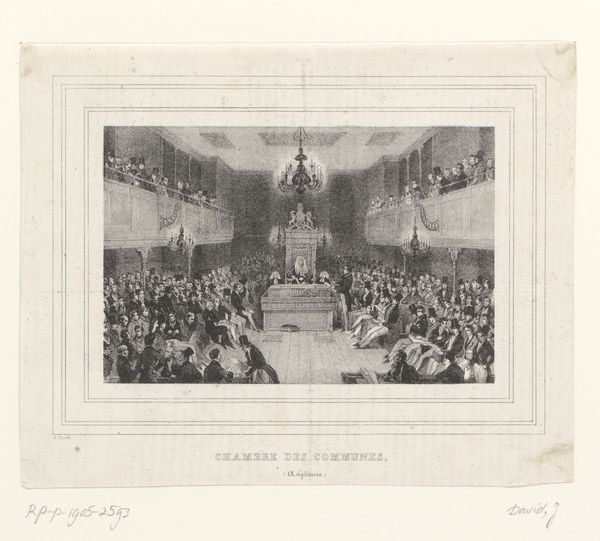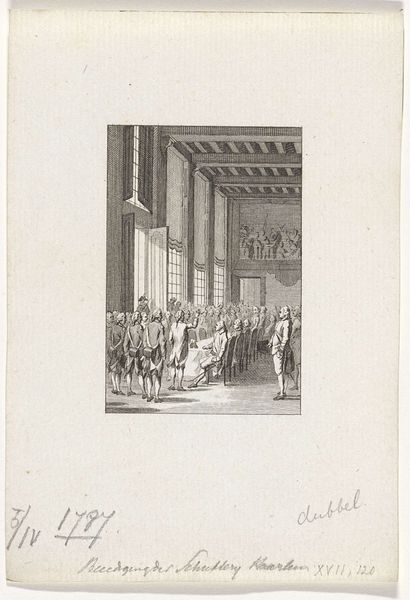
print, engraving
#
portrait
#
parchment
# print
#
old engraving style
#
archive photography
#
genre-painting
#
history-painting
#
engraving
#
realism
Dimensions: height 250 mm, width 370 mm
Copyright: Rijks Museum: Open Domain
Curator: Before us is Johannes Steyn’s “Troonsafstand van Karel V, 1555,” or "Abdication of Charles V, 1555," created as a print in 1834. It really captures a pivotal moment in history. Editor: It’s immediately striking how… contained it feels. The drama of the abdication seems muted, almost as if it’s happening behind glass. Do you get that sense of distance? Curator: Absolutely. Engravings often give that bird’s-eye perspective, inviting us to observe, analyze, but not necessarily participate emotionally. And think about Charles V – a figure loaded with symbolic weight – choosing this very public, formalized act of stepping down. Editor: The hall is visually very intriguing – and I note a checkered floor pattern, often a symbol of duality, the seen and unseen, or the balance and chaos within transitions of power. It could be interpreted as mirroring Charles V’s own inner turmoil, giving up his earthly authority and empires! Curator: An interesting interpretation of the checkered floor. And the relatively small figures emphasize the scale of the room, placing Charles V within this vast architectural stage. It becomes less about the individual, perhaps, and more about the institution of power itself. It also reflects the culture’s long-lasting memory of historical scenes. Editor: What stands out, too, is the relative lack of… individuality. Faces are indistinct, clothes similar. Steyn gives us a collective body of witnesses – almost like a chorus in a play – a physical representation of tradition and ceremony. It's as if individual emotion takes a back seat to the overwhelming weight of this transfer of power. The crown, robes, and symbols matter more than any single face. Curator: That aligns beautifully with Steyn’s artistic realism style; a conscious effort to faithfully record, but also to remind viewers that history unfolds through structures and protocols, even at deeply human turning points. What does it leave you pondering? Editor: The engraving speaks to a larger symbolic shift, the end of one era, and a glimpse into the uncertain future that’s about to unfold for everyone present – even if the immediate subjects seem to be figures like Charles V and Philip. It invites a recognition that we are each small figures in the theater of our own times.
Comments
No comments
Be the first to comment and join the conversation on the ultimate creative platform.
